Table of Contents
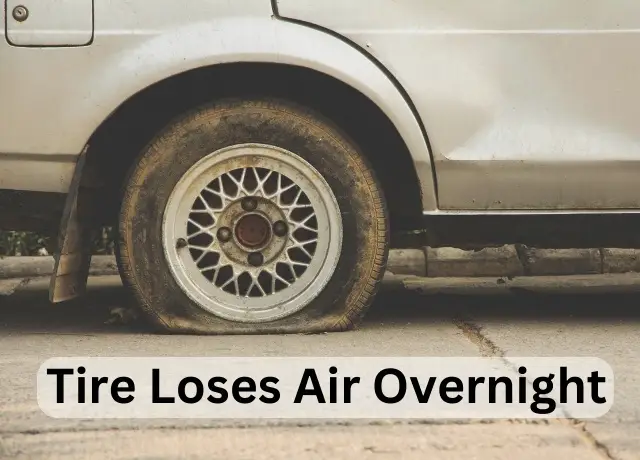
Imagine waking up early in the morning, coffee in hand, ready to conquer the day, only to discover your car tire has mysteriously lost air overnight — again. The frustration is real and shared by many car owners worldwide.
In addition to being a nuisance, flat tires can pose serious safety risks, as well as affect your vehicle’s performance. But why do they do this? A tire loses air overnight due to a variety of problems, including temperature fluctuations and small punctures that are hard to detect.
This article seeks to shed light on the mystery of the self-deflating tire, emphasizing the importance of regular tire maintenance and offering practical tips on preventing and fixing tire leaks.
So buckle up and read on — because no one should have to start their day with a flat tire.
How To Remove Tar From Tires | 4 Quick and Easy Steps
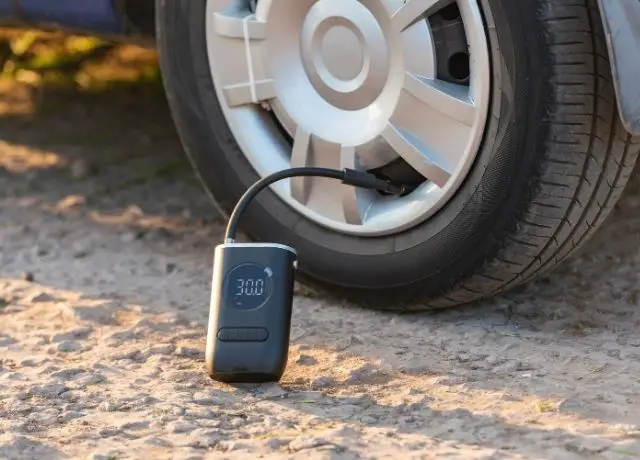
What Is Tire Pressure?
The amount of air in your car’s tires, measured in pounds per square inch (PSI), is known as tire pressure. Maintaining the correct tire pressure levels is crucial for several reasons.
A properly inflated tire ensures better road grip and handling, which directly impacts your safety on the road. Over-inflated tires can reduce traction, making driving more difficult, particularly in wet weather.
On the other hand, under-inflated tires can cause uneven tire wear and overheating, leading to premature tire failure or a blowout.
Furthermore, improper tire pressure can negatively affect fuel efficiency. Under-inflated tires create more resistance, requiring your vehicle to burn more fuel to move forward.
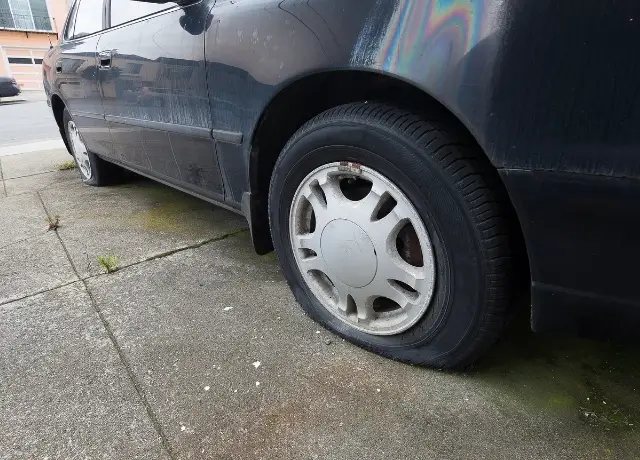
Why My Tire Loses Air Overnight?
It is common for drivers to experience overnight tire deflation, but knowing why it occurs can help prevent future accidents. In normal circumstances, a tire loses one to two PSI of air per month due to natural permeation. However, if you notice a tire loses 10 PSI overnight, there could be several reasons for it.
Air loss can be significant when the vehicle is punctured, cracked, or bulged on the sidewall. A small nail can cause a slow leak that will progressively worsen. Cracks and sidewall bulges, often the result of hitting a curb or pothole, can also cause air to escape.
Tire pressure changes also depend on temperature fluctuations. As a rule of thumb, for every 10-degree drop in temperature, your tires might lose about 1 PSI. The air inside the tire contracts when it’s cold, causing it to lose pressure.
Reasons for Tire Losing Air:
Normal Air Leakage:
The permeability of the materials used in tire construction results in air escaping from a tire naturally over time. The loss of air is called normal air leakage.
There is likely something wrong with your tire if you notice a significant loss in air pressure overnight. If your tire loses more than 10 PSI overnight, you should inspect it immediately or have a professional inspect it.
The air loss may not necessarily be due to a visible puncture but could be caused by the rim being damaged, valve stem problems or even a bead leak.
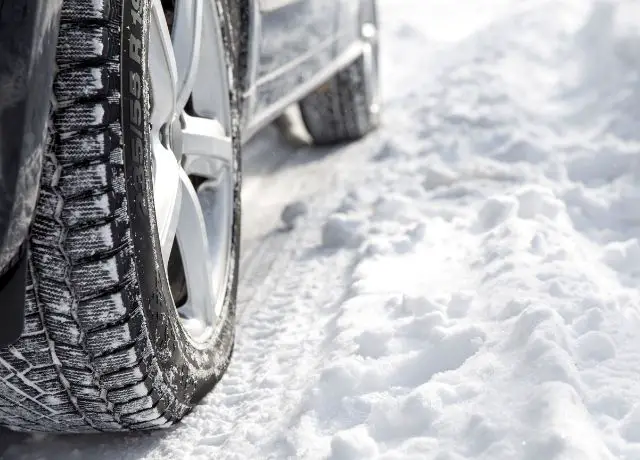
Temperature Fluctuations:
Changing temperatures can significantly affect tire pressure. A temperature variation of 10 degrees Fahrenheit will cause tire pressure to fluctuate by about 1 PSI.
In particularly cold weather, you may notice your tires seem under-inflated. As the air inside the tire contracts, the tire pressure drops. Conversely, in warm weather, the air expands, potentially resulting in over-inflation.
It’s essential to check overnight tire deflation and adjust as necessary to accommodate temperature fluctuations.
Tire Damage or Defects:
Slow leaks that go unnoticed can even cause brand-new tires losing air pressure. These leaks are caused by several factors, including:
- Valve Stem:
When you inflate your tires, you attach the air hose to a small protrusion called the valve stem. If the valve stem is damaged, old, or dirty, slow leaks can occur and cause overnight tire deflation.
If you notice constant air escaping from a tire, inspect the valve stem for any visible damage.
Common issues include cracked or loose rubber valve stems which allow air to escape. A simple and cost-effective solution to this problem is replacing faulty valve cores or stems.
- Puncture:
The most common cause of tire air loss is punctures. Sharp objects such as nails or stones can easily puncture a tire. The damage might not be obvious at first, especially if the object remains lodged in the tire for a long time.
You likely have a puncture if your tire loses 10 psi overnight. A professional can generally repair this type of damage unless the puncture is too large or on the sidewall.
- Tire Bead:
When the tire bead is damaged, the tire keeps losing air overnight, either due to improper installation of the tire or from deteriorated rubber as a result of aging.
Old tires should be regularly inspected and replaced to prevent bead damage and ensure a proper seal.
- Damaged Wheel:
Wheels that are damaged or significantly bent can also cause your tires to lose air. Wheels and tires need to form an excellent seal, and any damage to the wheel compromises this.
It may be worth having your wheel examined for any deformities that might be causing your tire to lose air if it consistently loses air but does not exhibit signs of puncture damage.
- Dry Rot:
Dry rot happens to tires over time, often presenting as cracks along the sidewalls or tread of the tire. Dry rot weakens the structure of the tire and can cause sudden air loss or even blowouts.
You should replace your tires if they show signs of dry rot, regardless of how much tread remains.
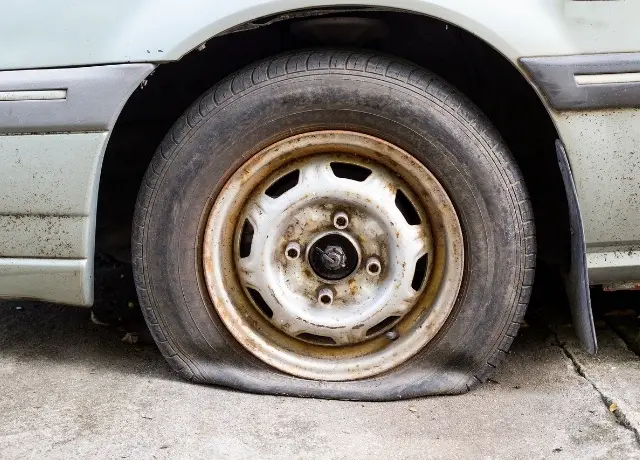
Corroded Wheel:
Tire losing pressure at night can be caused by corrosion on the wheel, which can cause pits and rough spots on the wheel’s surface, resulting in a poor seal between the tire and the wheel.
The tire can also suffer physical damage due to corrosion, which can result in cracks and air leaks.
Poor Seal:
A poor seal between the tire and the wheel can also cause inflation issues with tires. This could be due to improper installation, damage to the wheel or tire bead, or even the build-up of dirt and debris.
Over time, the seal’s condition can deteriorate, leading to slow leaks. If you suspect a poor seal is causing a deflated tire in the morning, it would be best to have an expert technician inspect it.
They may need to clean the sealing surfaces and re-seat the tire, ensuring a proper and airtight seal.
Missing Valve Cap:
Even though it may seem insignificant, a missing valve cap can lead to your tire losing air. The valve cap protects the valve stem from dirt, grit, and other foreign objects that may damage the valve core.
In addition, it prevents slow leaks by providing a secondary seal. If your valve cap is damaged or missing, it should be replaced.
This is a quick and easy fix for preventing potential tire leaks because valve caps are inexpensive and easy to install.
Pinhole in Tire’s Sidewall:
You may have a small pinhole leak in your tire’s sidewall if your tire is constantly losing air. This can be difficult to spot with the naked eye.
To detect these leaks, it is common to apply soapy water to the tire and look for bubbles that appear when air escapes.
Typically, pinhole leaks can’t be repaired and often require a new tire if found. Contact a professional if you find a pinhole leak.
Faulty Tire Pressure Monitoring System (TPMS):
In your vehicle, you will hear an alert if the tire pressure falls below a certain level due to the Tire Pressure Monitoring System (TPMS).
This system, however, may give incorrect readings if it is faulty, leading you to believe your tires are losing air when they are not.
Checking your tire pressure manually with a reliable gauge will help you determine if your TPMS is working properly.
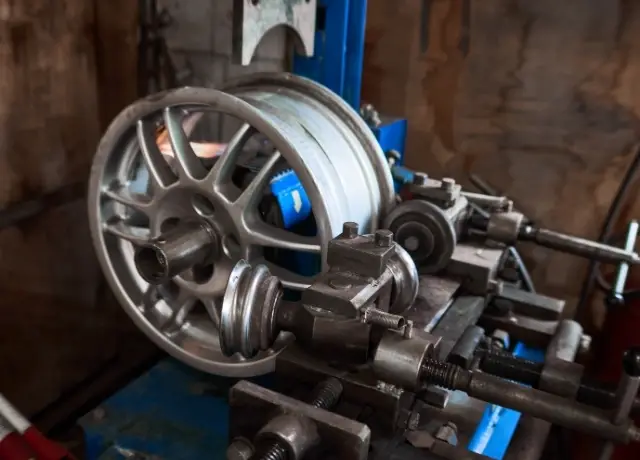
Rim Damage:
If the rim of your wheel is damaged, your tire will lose air. This is particularly true if your wheel is made from softer materials like aluminum or magnesium.
In areas where the tire cannot form a proper seal, corrosion, impact damage, or poor casting can cause slow leaks.
Seek professional help to repair and inspect the damaged rim if you suspect it has been damaged by tire sealants.
Pothole Damage:
A pothole can damage your tires, wheels, and axles, resulting in leaky tires and misaligned wheels. If you hit a pothole, your tires, wheels, and axles can be damaged.
For those who frequently travel on roads with poor surfaces, it is important to check your tires regularly for damage and maintain proper tire pressure to reduce impact.
Under-Inflated Tire:
The lack of air pressure in an underinflated tire leads to more punctures and leaks. Sharp objects can penetrate the tire more easily due to the weak structure.
Improper Tire Pressure:
An overinflated tire is more likely to be damaged by impact, while an underinflated tire may suffer from increased sidewall and tread wear.
It is crucial to regularly check and maintain your vehicle’s recommended tire pressure to prevent premature wear, damage, and air loss.
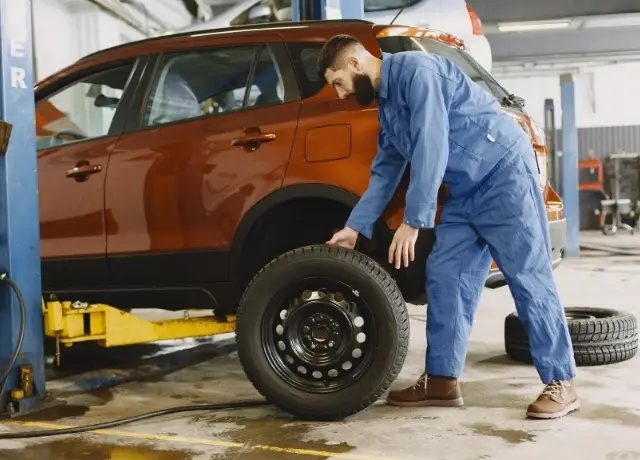
How Do You Locate The Tire Air Leakage?
Using Soapy Water or Leak-Detecting Pray:
Using a soapy water solution or a leak-detecting spray to locate a tire leak is one of the easiest and most effective ways. When the solution is applied at the leak site, bubbles form.
Make sure to spray your tire with a small amount of liquid soap mixed with water. Be sure to pay particular attention to the tread area, the valve stem, and the bead area of the tire.
Detecting leaks with store-bought sprays is also possible and can be purchased at most auto parts stores.
Submerging the Wheel into the Water:
To detect tire leaks, you can submerge the wheel and tire in water. You will need a large tub filled with water. Remove the wheel from your vehicle and completely submerge it in the water.
The location of the leak can be determined by rotating the wheel slowly and watching for air bubbles on the surface of the wheel.
With this method, it’s easy to detect small leaks that might be missed with soapy water.
Feel the Sound:
To use this method, find a quiet place and get your ear close to the tire. Listen carefully for any hissing or sizzling sounds that indicate that air is escaping.
In noisy environments where visual methods may not be as effective, this method can be useful to detect leaks. However, it can not detect very small leaks as reliably as visual methods.
How Do You Fix the Tire Air Loss?
Using a Sealant:
You can use sealants to repair slow leaks in your tires. They work by being poured into the tire through the valve stem. As the tire rotates, the sealant spreads across the inside surface, sealing any holes.
Using a sealant, such as one that contains propylene glycol, is preferable to toxic ones. However, be aware that sealants are mostly temporary fixes, and that your tire should always be properly repaired or replaced.
Regular Tire Maintenance & Inspection:
Make sure your tire pressure is checked regularly, especially before long trips or significant temperature changes, to prevent tire air loss.
Your vehicle’s user manual or sticker inside the driver’s door will usually tell you the best tire pressure. Check your tires for damage, excessive wear, and other problems that may cause a leak.
Tire Rotation & Balancing:
It is recommended that you rotate your tires every 5,000-7,000 miles, but your owner’s manual may specify an interval. Regular tire rotation and balancing will protect your tires from leaks and extend their life.
For precise alignment, tire shops offer computer-aided alignment services. Alignment is also crucial if uneven tire wear is to be avoided, which can lead to leaks.
Recognize a Faulty Tire Pressure Monitoring System (TPMS):
These systems, however, can sometimes malfunction, resulting in incorrect tire pressure readings. Many modern vehicles are equipped with a Tire Pressure Monitoring System (TPMS).
Although your TPMS may indicate that the tires are properly inflated, you should manually check their pressure with a reliable gauge.
Choosing the Right Tires for the Driving Conditions:
If driving in warmer weather, it is important to use the right type of tires for the conditions. Winter tires, for example, are made from softer compounds that provide better grip in freezing temperatures but can wear out and lose air pressure quickly in colder weather.
In extreme temperatures, however, summer tires can crack and become brittle, resulting in air loss. All-season tires are designed to handle a variety of conditions, but they might still struggle in extreme conditions.
To prevent unnecessary tire damage and air loss, choose tires that are suitable for the weather conditions in your area.
FAQs:
Q: What is causing my tire to lose air without a hole?
Ans: There are a number of reasons why tires may lose air without a visible hole. Poor valve stems deteriorate over time due to harsh elements, causing air leaks.
A bad bead seal, where the tire meets the rim, can also cause air loss. In addition, a slow leak may be caused by damage to the wheel itself, such as slight bends or cracks.
Q: What can I do to prevent overnight tire pressure loss due to temperature changes?
Ans: To avoid overnight tire pressure loss due to temperature changes, regular tire pressure checks are essential. If your tire pressure drops by 10 degrees, it decreases by about 1 PSI. Check your tire pressure regularly, especially when the weather changes significantly.
Q: What is causing my tires to lose air overnight?
Ans: The air inside your tires may contract overnight due to fluctuations in temperature. Other causes, including a bad valve stem, a damaged wheel, or a damaged bead seal, could cause the tires to lose air.
Q: What caused my tire to go flat overnight?
Ans: There are many reasons why a tire can go flat overnight, including slow leaks that aren’t noticed during the day, temperature fluctuations that cause air to contract, or sudden failures of the tire’s structure. Regular tire pressure checks can prevent unexpected flats.
Q: Should I replace a tire instead of repairing it?
Ans: It may be better to replace a tire than to repair it when the damage is severe or if it is on the sidewall or shoulder of the tire that cannot be properly repaired.
A tire should be replaced if it has been driven on while flat if it shows signs of aging, such as cracking or dry rot, or if it reaches the tread wear indicator.
Q: Is it possible for a damaged tire valve to cause air loss overnight?
Ans: There is a possibility that a damaged or malfunctioning valve stem could cause your tire to lose air overnight. The valve stem holds the air inside the tire, so if it’s damaged or leaking, it can lead to a gradual loss of pressure.
Q: Can driving on underinflated tires cause them to lose air more rapidly?
Ans: If your tires are underinflated, they will lose more air more quickly. The sidewalls of the tire can flex during driving, causing heat to be generated, accelerating the tire’s deterioration, and potentially causing the tire to lose air more rapidly if you underinflate the tire.
Conclusion:
In conclusion, tire loses air overnight can be due to a variety of reasons, from visible punctures to less obvious causes like
- Faulty Valve Stems
- Bad Bead Seals
- Damaged Wheels
Tire pressure fluctuations can also be influenced by temperature changes. It is possible to prevent many tire air loss issues by performing proactive maintenance, such as rotating and balancing tires and choosing the right tires for the driving conditions.
In addition to maximizing performance and longevity, tire health is crucial for safety as well.
Maintaining your vehicle’s tires properly and understanding their health will pay off in the long run. You’ll enjoy smoother rides, longer tire life, and better fuel efficiency, as well as safer journeys. So look after your tires and take good care of them – your vehicle (and your peace of mind) will thank you!

